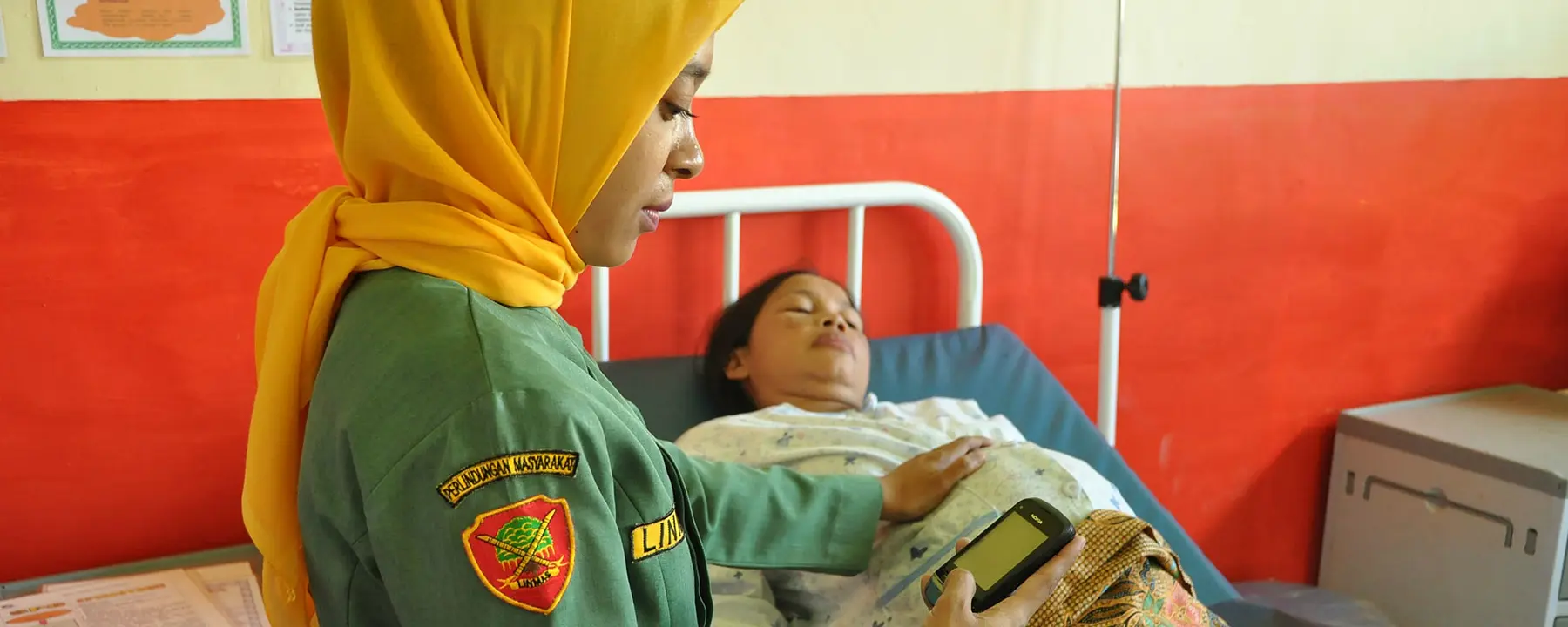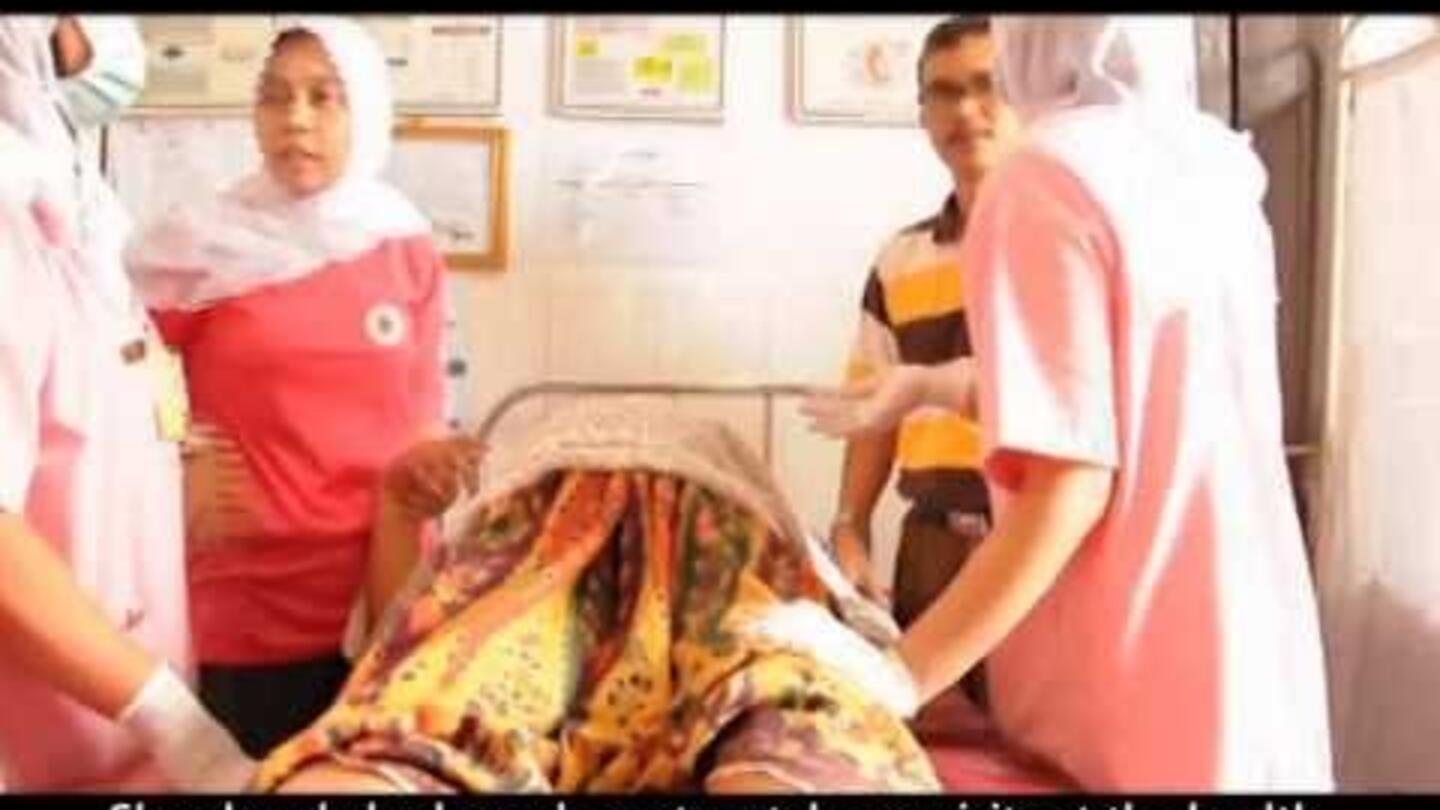An open-source application for sharing patient information to reduce referral delays in perinatal emergencies
During childbirth, medical personnel can have mere seconds to make decisions that will alter the fate of a mother or newborn. Deciding to seek referral, understanding where best to refer the mother and child in an emergency, and transporting a mother to the appropriate heath facility can decrease morbidity and mortality for both patients.
In Indonesia, the lack of a formally-defined referral pathway for obstetric and newborn medical cases created delays that led to increased morbidity and mortality. The country’s mortality rate is one of the highest in South East Asia.
To help address this gap, RTI—as part of the Jhpiego-led Expanding Maternal and Neonatal Survival (EMAS) project funded by USAID—led the development of SijariEMAS, a phone and web-based application that facilitates timely communication and improves coordination within agreed-upon referral networks strengthened by EMAS.
Sharing Health Information in Real-Time Emergencies
In 2011, our developers began designing SijariEMAS based on intensive user need assessments and engagement of local stakeholders to map out standard operating procedures, as well as optimal referral pathways between health centers and hospitals.
Developed using open source software and designed to integrate with existing health information systems, the beta version of SijariEMAS was released in October 2012 and rolled out to 30 EMAS districts over a three-year period. From 2015 to 2016, SijariEMAS was rolled out to an additional 21 replication districts, for a total of 51 districts.
Upon identifying an obstetric or newborn emergency, a health center-based midwife sends an SMS (text) message or makes a phone call to provide patient data, vital signs, diagnosis, and pre-treatment information to the SijariEMAS system. The system routes the information to the nearest hospital according to the established referral pathway, triggering an alarm in the emergency room, maternity ward, and/or newborn ward. After assessing the request, hospital staff either accept or reject the referral. If accepted, the incoming referral notification is automatically forwarded to the emergency team. If rejected, the system routes the message to the next facility in the referral pathway.
SijariEMAS includes user dashboards that allow medical personnel and district health offices to easily manage and track the referral process. Data collected through the system are used to improve participating health facilities’ accountability and transparency, and shared with community groups so they can advocate for improved services for mothers and newborns.
Expanding Services and Addressing Barriers
Implementation, like design, is a collaborative process. While the EMAS project provides the software and technical assistance, district health offices are responsible for policies and oversight of operations, and hospitals provide hardware and manage operations within their own facilities.
Through successful collaboration across these stakeholders, SijariEMAS has been implemented across 30 districts in six targeted provinces. Where the application has had strong support from the district health office, such as in Karawang and Bogor districts in West Java, over 1,000 referrals are being made through the SijariEMAS each month. And some health offices are using their own budgets to provide the software to additional districts and provinces. For example, within North Sumatra the provincial health office used its own budget to expand SijariEMAS to additional districts and include referral pathways from health centers to tertiary referral hospitals.
In some areas, EMAS introduced memorandums of understanding (called PKs) across regional referral networks to address administrative barriers to referrals made between such facilities. As of December 2015, a PK was in place in each of the 30 EMAS districts and four cross-regional PKs have been signed with non-EMAS districts.
As of June 2016, SijarIEMAS has connected more than 34,693 midwives and doctors. The system is installed in 173 hospitals and 1,338 community health clinics, providing an efficient and thorough referral process that enables hospitals to prepare for incoming emergency cases. In 2015 alone, hospitals responded to 76 percent of incoming referrals within 10 minutes.
Integrating SijariEMAS with National Systems and Raising the Level of Quality Care
SijariEMAS is currently used as the emergency management system—for all types of emergencies, not just obstetric cases—in 10 EMAS-supported districts. And expanded features we developed in 2015 and 2016 enable SijariEMAS to integrate with SIKDA Generic, the Ministry of Health’s electronic medical record system that is used in several health centers.
SijariEMAS has helped increase the number of patients who receive quality care. Between October 2014 and September 2015, SijariEMAS facilitated 33,052 maternal and neonatal referral cases—an increase from 14,774 in the previous year.
Going forward, the EMAS project team continues to see significant interest and commitment among district and provincial health offices to strengthen the referral system and replicate SijariEMAS. More than 50 percent of the SijarieEMAS districts have budgeted to support SijariEMAS in 2017. Perhaps most importantly, to build in long-term sustainability the EMAS team created a business plan that outlines options for transferring the management and maintenance of SijariEMAS to government or private-sector entities.
- U.S. Agency for International Development (USAID)
- Jhpiego (prime)
- Health Institute of Budi Kemuliaan
- Muhammadiyah
- Save the Children

